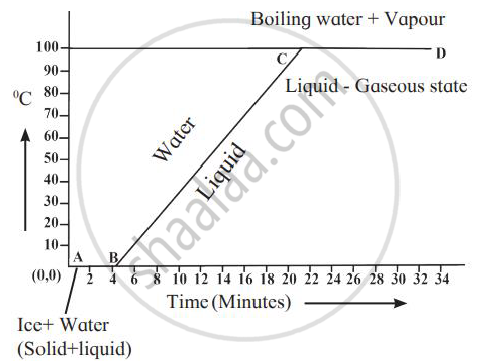Advertisements
Advertisements
प्रश्न
Write scientific reason.
Even if boiling water is constantly heated, its temperature does not rise.
उत्तर
- The heat energy absorbed at a constant temperature during transformation of liquid into a gas is called the latent heat of vaporisation.
- When heat is supplied to boiling water, it is used to weaken the bonding between molecules of water, causing transformation from liquid state to gaseous state, i.e., steam.
- As the heat supplied is utilized for the change of state entirely, temperature of water does not change.
APPEARS IN
संबंधित प्रश्न
State two characteristics of a good thermion emitter.
What is meant by latent heat? How will the state of matter transform if latent heat is given off?
A thermally insulated pot has 150 g ice at temperature 0°C. How much steam of 100°C has to be mixed to it, so that water of temperature 50°C will be obtained? (Given : latent heat of melting of ice = 80 cal/g, latent heat of vaporization of water = 540 cal/g, specific heat of water = 1 cal/g °C)
Explain the following temperature vs time graph.

Define the following terms:
(i) Latent heat,
(ii) Latent heat of fusion of ice.
What is the name given to the energy absorbed during a phase change?
Define specific latent heat of vaporization of a substance.
Give one consequence of the high specific latent heat of fusion of ice.
Why do we feel much comfortable when we sit under a moving fan especially when our body is sweating?
When ice is converted into water : constant temperature : : before the water evaporates : _______
Find the odd one out and give its explanation.
During reheating, ice is converted to water at a temperature of 0 °C.
Write scientific reason.
Use a pressure cooker to cook food in cold air.
Write scientific reason.
The bottom of some steel utensils used for cooking is copper.
Define specific latent heat capacity
600 g of copper at 50°C is mixed with lOOOg water at 20°C. Find the final temperature of the mixture. The specific heat capacity of copper is 0.4 Jg-1°C-1 and that of water is 4.2 Jg-1°C-1
The amount of heat energy required to melt a given mass of a substance at its melting point without any rise in its temperature is called as the ______.
